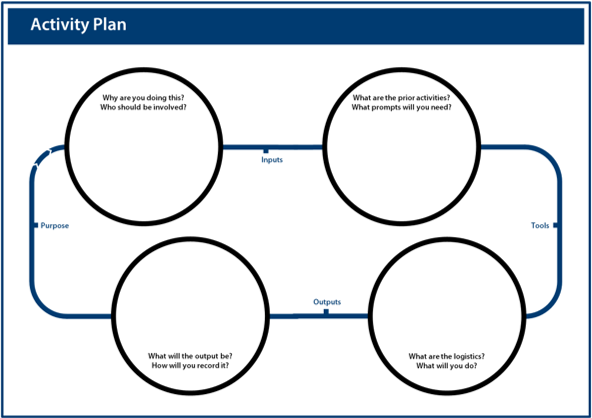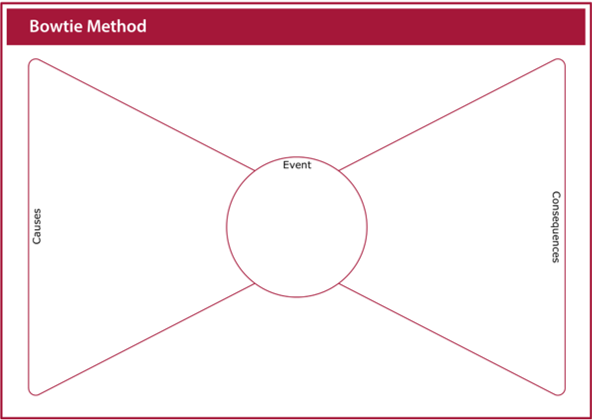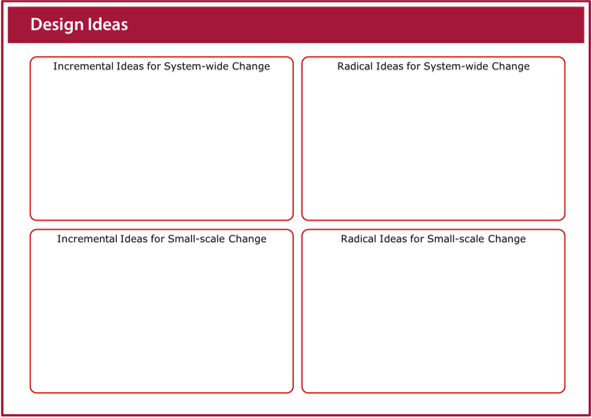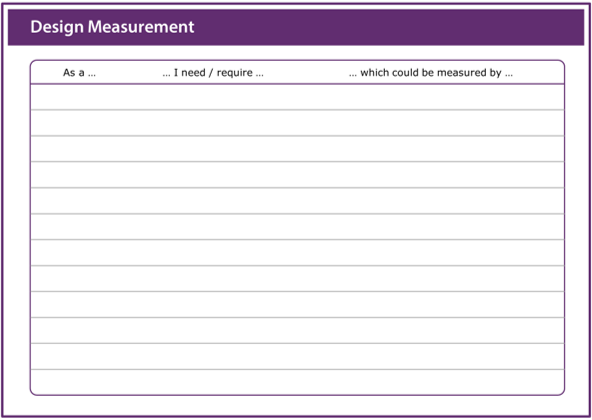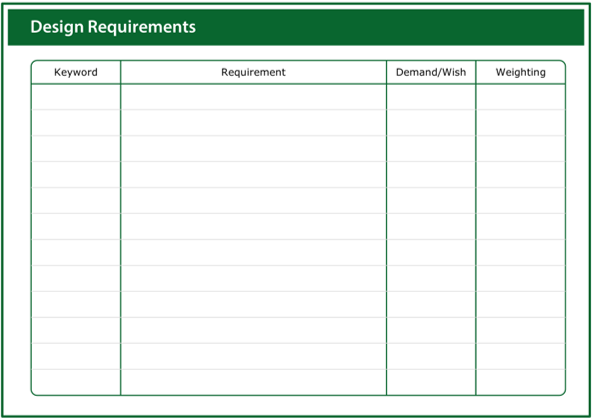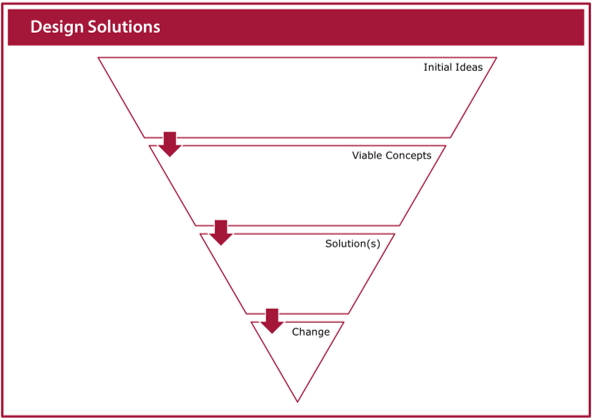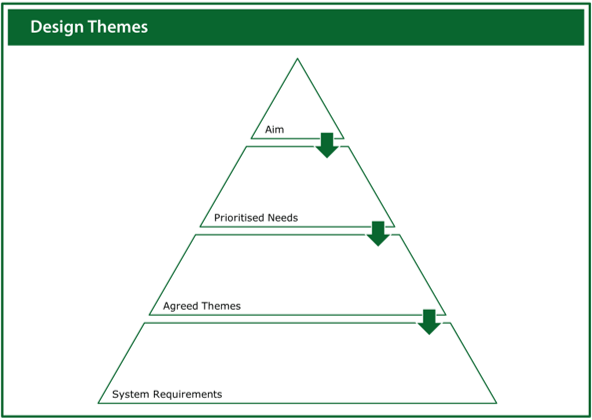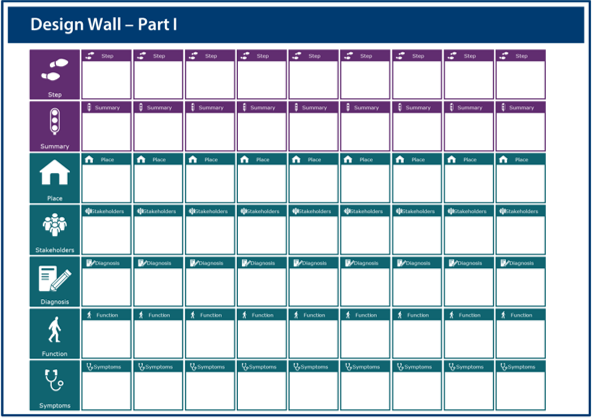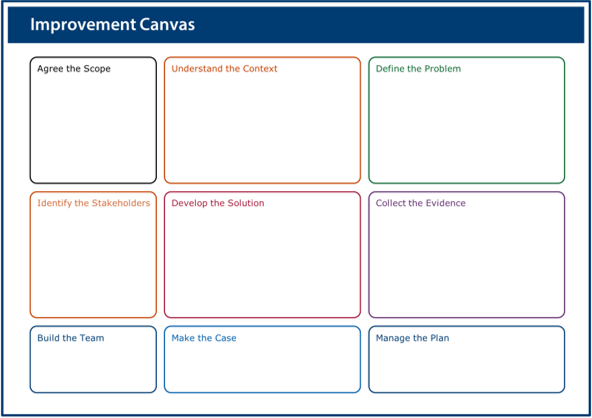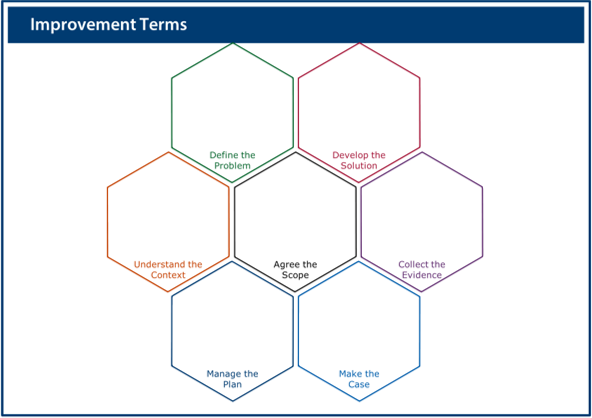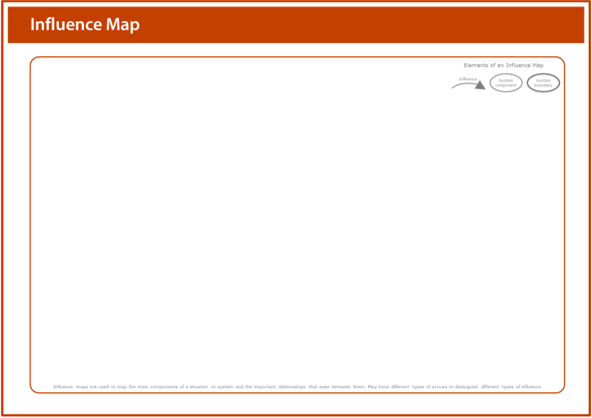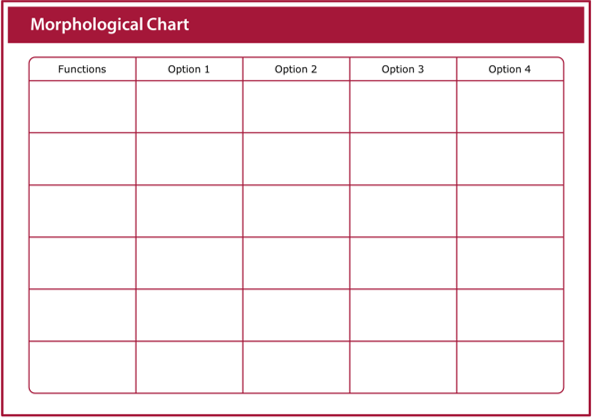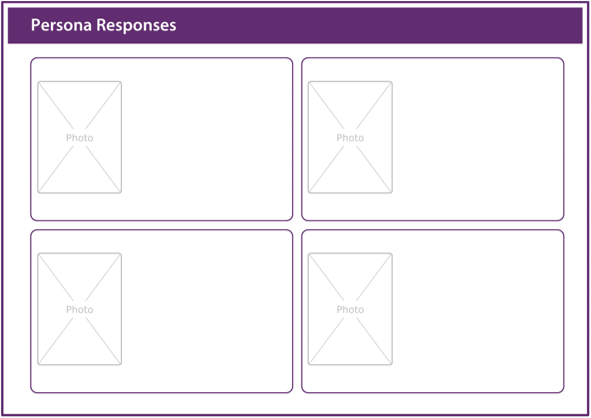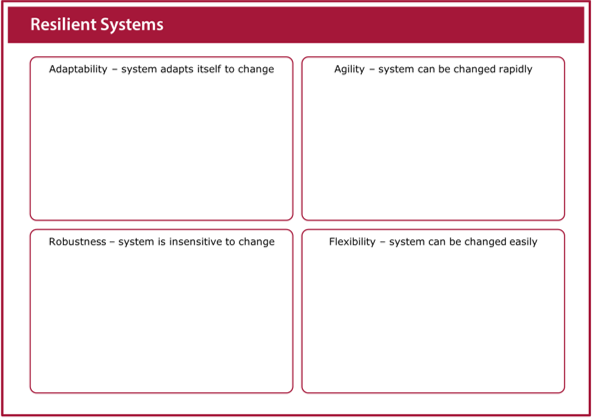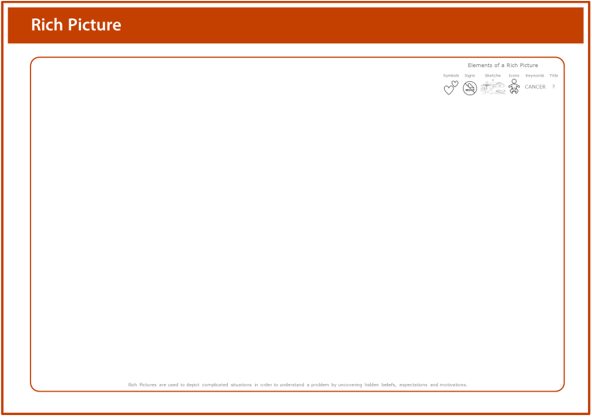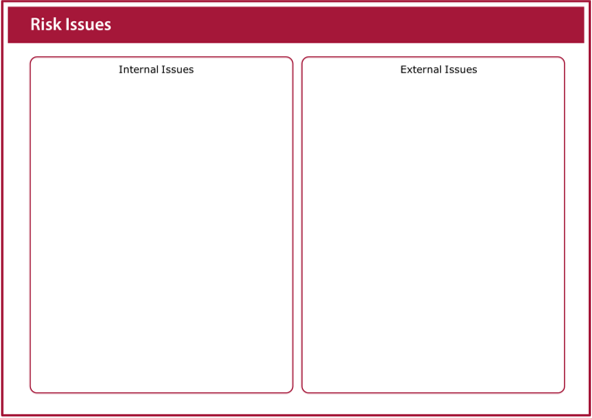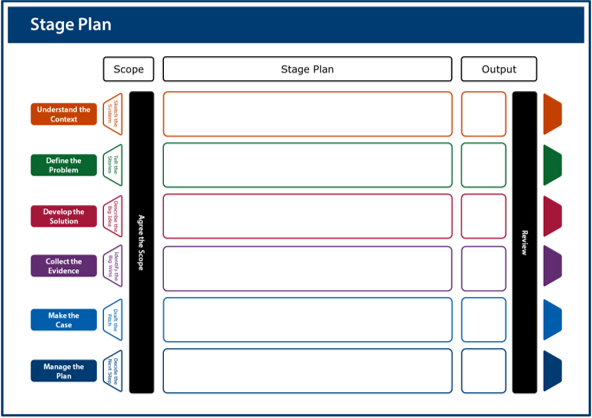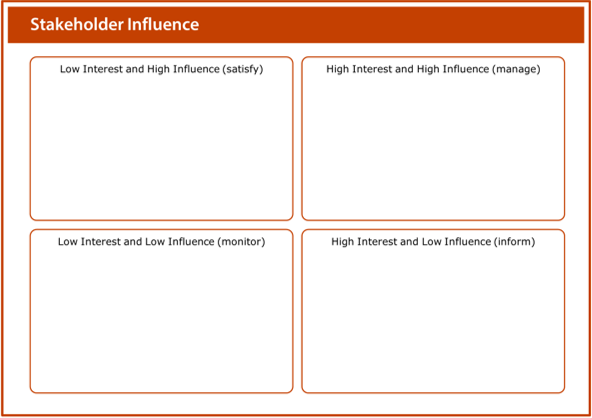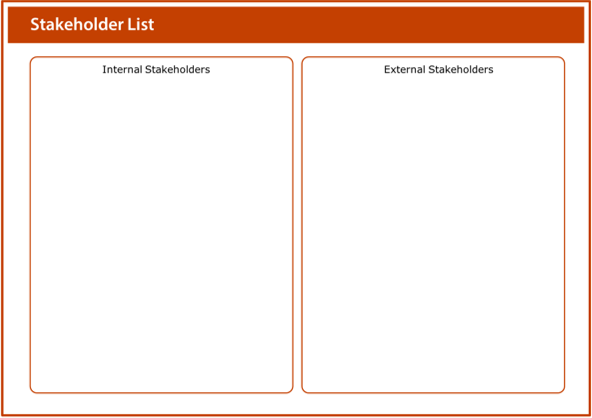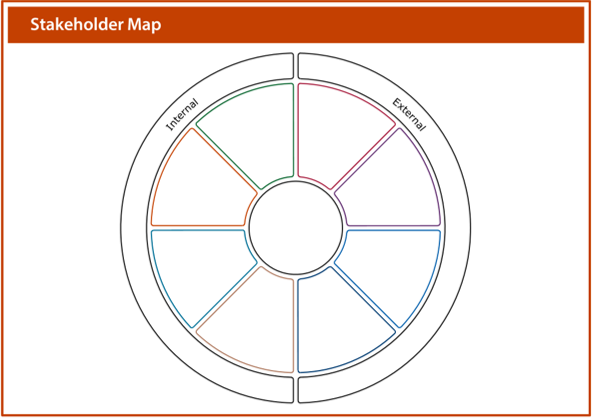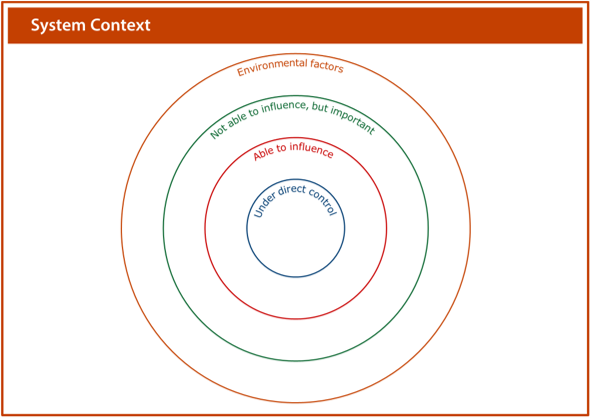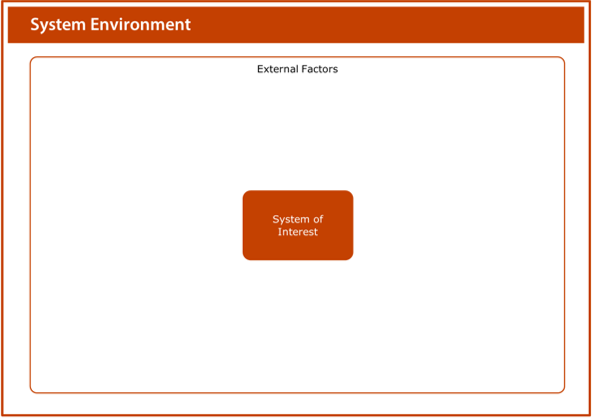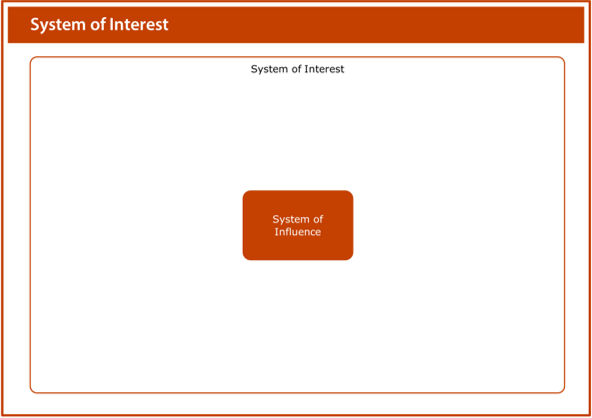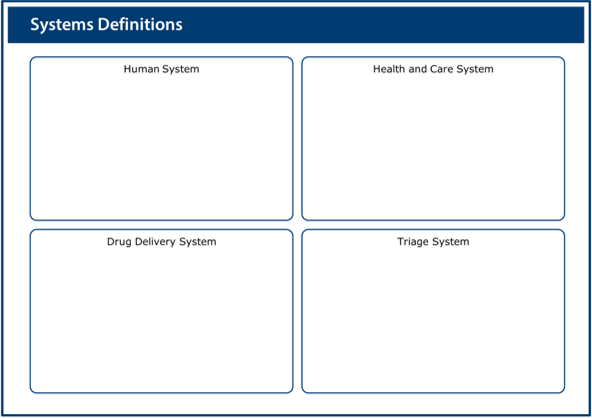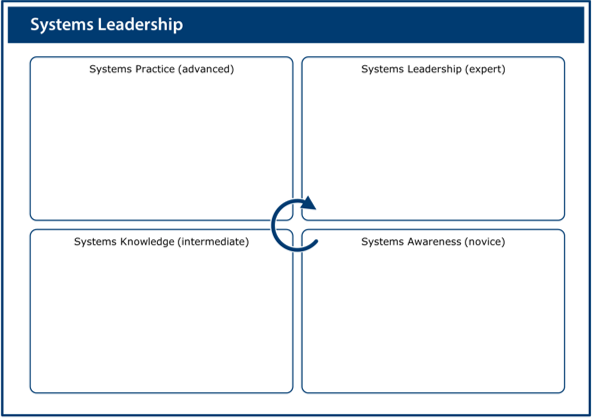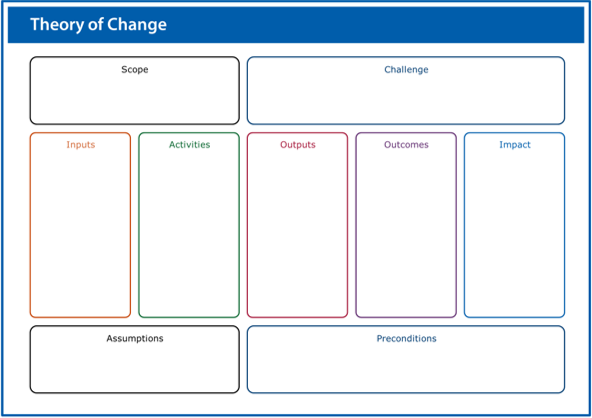Worksheets assist the improvement team in the planning and delivery of activities within the improvement process.
Contents
Introduction
The improvement process, captured by the worksheets, may be summarised as:
- Fill in the Improvement Canvas with known information
- Identify possible knowledge gaps and outputs to be created
- Select the activities or questions to be addressed
- Prepare the activities and associated tools for use
- Plan the improvement programme and iterate as appropriate
This process may be summarised as a fundamentally linear, yet iterative process, designed to deliver improvement. It may comprise, interchangeably, elements from both the question and activity driven processes. The worksheets have been chosen to compliment the posters and cards included in this toolkit. They are listed here alphabetically, with reference to the page on which each worksheet may be found.
The worksheets may be displayed and annotated in electronic form or may be printed at a range of scales, from A3 for desk work through to A1 for class use.
List of Worksheets
Worksheets
Activity Plan
A summary of an activity plan
Use:
- To remind the team of the elements required to prepare an improvement activity
- To highlight the value of preparing for and analysing after the execution of an activity
- To accentuate the iterative nature of each activity in the improvement process
Bowtie Method
A summary of system risks and barriers
Use:
- To visualise the links between causes of an event and potential consequences
- To identify the barriers between the causes and potential consequences
- To understand the impact of possible degradation of the barriers over time
Data-flow Diagram
A summary of data-flows within the system
Use:
- To identify key activities and data stores within the system
- To visualise the data flows between all elements of the system
- To understand the data-driven behaviour of the system
Design Ideas
A summary of design ideas
Use:
- To capture design ideas that might inspire or lead directly to system improvement
- To encourage the capture of incremental or local ideas for improvement
- To prompt the development of radical or more global ideas for improvement
Design Measurement
A summary of measurement needs
Use:
- To remind the team of the stakeholders related to the improvement process
- To highlight the range and diversity of prioritised stakeholder needs
- To articulate how the achievement of prioritised needs might be measured
Design Requirements
A summary of design requirements
Use:
- To translate key stakeholders needs into realisable system requirements
- To agree the core themes that capture the essence of the proposed system
- To accentuate the importance of developing smart requirements
Design Solutions
A summary of concepts and solutions
Use:
- To present the initial ideas generated in response to the system requirements
- To highlight the viable concepts inspired by the initial ideas
- To summarise the solution(s) developed from the viable concepts
Design Themes
A summary of needs and themes
Use:
- To present the prioritised needs in the context of the programme aim
- To highlight the agreed themes derived from the prioritised needs
- To summarise the systems requirements related to the agreed themes
Design Wall
A summary of the patient journey
Use:
- To remind the team of the key steps that make up the patient journey
- To highlight the patient condition and decisions to be made along the journey
- To describe the information and resources required to support the journey
note the Design Wall comprises two parts
Failure Modes and Effects Analysis
A summary of the system risk assessment
Use:
- To provide a systematic framework for the assessment of system risks
- To prompt the identification and preliminary evaluation of hazards and risks
- To highlight the value of a clear system description as a prerequisite for assessment
Improvement Canvas
A summary of the status of the programme
Use:
- To remind the team of the factors that determine the status of the programme
- To accentuate the need to maintain an up to date picture of the status
- To highlight the interchangeability of questions and information
see also Improvement Canvas poster
Improvement Terms
A summary of key improvement terms
Use:
- To remind the team of the terminology related to the improvement process
- To highlight any differences or ambiguity in the use of key improvement terms
- To accentuate the importance of understanding key improvement terms
Influence Map
A summary of influences within the system
Use:
- To identify key components and/or issues present within the system
- To visualise the nature of influences between the elements of the system
- To understand the inherent and emergent behaviour of the system
Morphological Chart
A summary of the improvement concepts
Use:
- To capture a variety of ideas with potential to fulfil key functional requirements
- To identify combinations of ideas that will satisfy the overall system requirements
- To accentuate the importance of identifying alternative system architectures
Persona Descriptions
A summary of persona descriptions
Use:
- To capture the diversity of people within a chosen stakeholder group
- To identify the key characteristics that are should be recorded
- To provide a simple means to describe stakeholder diversity that matters
Persona Responses
A summary of persona responses to a situation
Use:
- To predict the response of people within a chosen stakeholder group
- To facilitate a preliminary evaluation of their response to a given situation
- To provide a simple means to reflect on stakeholder diversity that matters
Resilient Operation
A summary of the resilience of an operation
Use:
- To identify those features of a process that are core to its operation
- To determine which features must be delivered in common or related ways
- To understand where a degree of local variation is necessary
Resilient Systems
A summary of the resilience of a system
Use:
- To determine those features of a system that are critical to its resilient
- To identify features that will be robust or adaptable in response to change
- To identify features that may be agile or flexible in response to change
Rich Picture
A summary picture of the system
Use:
- To capture images that represent multiple perspectives of the system
- To visualise connections between the collected images of the system
- To understand the inherent and emergent behaviour of the system
Risk Issues
A summary of system risks
Use:
- To capture risk issues that might inspire or lead directly to system improvement
- To facilitate the identification of internal or local hazards and risks
- To prompt the identification of external or more global hazards and risks
Stage Plan
A summary of the stage plan
Use:
- To remind the team of the main strands of an improvement plan
- To highlight the imperative to define an improvement plan based on clear outputs
- To accentuate the dynamic nature of the improvement process
see also Stage Plan poster
Stakeholder Influence
A summary of stakeholder influences
Use:
- To remind the team of the stakeholders related to the improvement process
- To highlight stakeholders with the interest and power to make things happen
- To accentuate the importance of understanding stakeholders priorities
Stakeholder List
A summary of the system stakeholders
Use:
- To remind the team of the stakeholders related to the improvement process
- To highlight the range and diversity of potential stakeholders
- To accentuate the importance of understanding stakeholders needs
Stakeholder Map
A summary of the system stakeholders
Use:
- To remind the team of the stakeholders related to the improvement process
- To highlight the range and diversity of potential stakeholders
- To accentuate the importance of understanding stakeholders needs
see also Stakeholder Map poster
Stakeholder Needs
A summary of stakeholders needs
Use:
- To remind the team of the stakeholders related to the improvement process
- To capture the particular needs of the individual stakeholders
- To highlight the range and diversity of stakeholder needs
Structured What If Technique
A summary of key system risks
Use:
- To provide a systematic framework for the investigation of possible system behaviours
- To prompt the identification and preliminary evaluation of impacts, controls and risks
- To highlight the value of a clear system description as a prerequisite for assessment
System Boundaries
A summary of the system boundaries
Use:
- To provide a summary of key system boundaries and external factors
- To identify the wider system of interest for the improvement programme
- To highlight the [usually] smaller system of influence for the programme
System Context
A summary of the system context
Use:
- To provide a summary of key system boundaries and external factors
- To identify boundaries of influence and control for the improvement programme
- To highlight the context in which improvement may be delivered
System Environment
A summary of external factors
Use:
- To identify key external factors around the system of interest
- To illustrate clearly the limits of the system of interest
- To appreciate the implications of the current system boundaries
System of Influence
A summary of the system of influence
Use:
- To identify key elements with the current system of influence
- To describe clearly the bounds of the system of influence
- To appreciate the implications of the current system boundaries
System of Interest
A summary of the system of interest
Use:
- To identify key areas of interest around the system of influence
- To illustrate clearly the limits of the system of influence
- To appreciate the implications of the current system boundaries
Systems Definitions
A summary of systems definitions
Use:
- To provide a reminder of the range of descriptions of individual systems
- To focus on the similarities between human and physical systems
- To highlight the value of a clear and expansive definition of a system
Systems Leadership
A summary description of systems leadership
Use:
- To define the qualities of systems leadership required for improvement
- To illustrate the need for progression towards systems leadership
- To highlight the value of a clear process to deliver systems leadership
see also Systems Leadership poster
Theory of Change
A summary of the purpose of the programme
Use:
- To remind the team of the factors that define and describe the purpose of the programme
- To articulate the resources required and the expected long-term impact of the programme
- To identify the preconditions that must be met to initiate and execute the programme
see also Theory of Change poster
Feedback
We would welcome your feedback on this page:
Privacy policy. If your feedback comments warrant follow-up communication, we will send you an email using the details you have provided. Feedback comments are anonymized and then stored on our file server
Read more about how we use your personal data. Any e-mails that are sent or received are stored on our mail server for up to 24 months.




